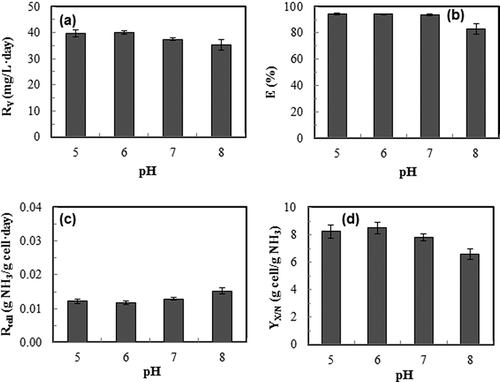Figures & data
Figure 2. Cell density and biomass productivity of continuous culture of S. dimorphus under different dilution rates. Ammonia gas loading rate 39.9 mg/L-day; medium pH 7. Data are means of five consecutive samples at the steady state (after at least three volume changes), and error bars show standard deviations.
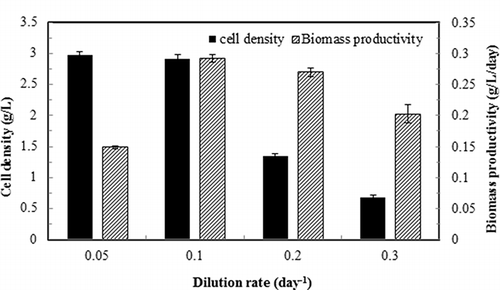
Figure 3. Effects of dilution rate of continuous culture of S. dimorphus on ammonia gas removal performance. Ammonia gas loading rate 39.9 mg/L-day; medium pH 7. (a) ammonia removal rate, R V; (b) overall ammonia gas removal efficiency, E; (c) cellular ammonia consumption rate, R cell; (d) cell yield based on ammonia input, Y X/N. Data are means of five consecutive samples at the steady state (after at least three volume changes), and error bars show standard deviations.
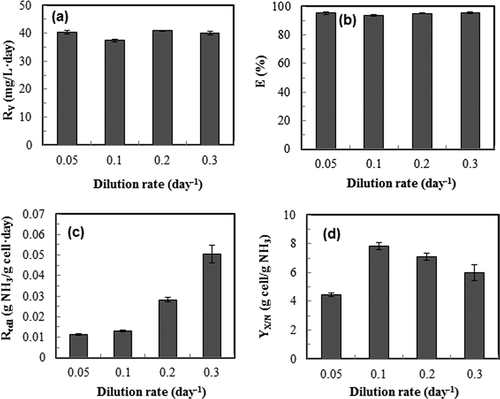
Figure 4. Cell density and biomass productivity of continuous culture of S. dimorphus under different inlet ammonia gas contents. Dilution rate: 0.1 day−1; medium pH 7. Data are means of five consecutive samples at the steady state (after at least three volume changes), and error bars show standard deviations.
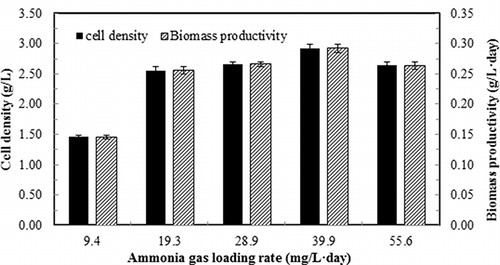
Table 1. Nitrogen distribution of inlet ammonia (Ninlet) among cell biomass (Ncell), liquid medium (Nliquid), and exhausted gas (Noutlet) at different dilution rates (D; day−1) of microalgal culture
Table 2. Nitrogen distribution of inlet ammonia (Ninlet) among cell biomass (Ncell), liquid medium (Nliquid), and exhausted gas (Noutlet) at different ammonia gas loading rates (mg/L-day) for microalgal culture
Figure 5. Effects of ammonia gas loading rate of continuous culture of S. dimorphus on ammonia gas removal performance. Dilution rate: 0.1 day−1; medium pH 7. (a) ammonia removal rate, R v; (b) overall ammonia gas removal efficiency, E; (c) cellular ammonia consumption rate, R cell; (d) cell yield based on ammonia, Y X/N. Data are means of five consecutive samples at the steady state (after at least three volume changes), and error bars show standard deviations.
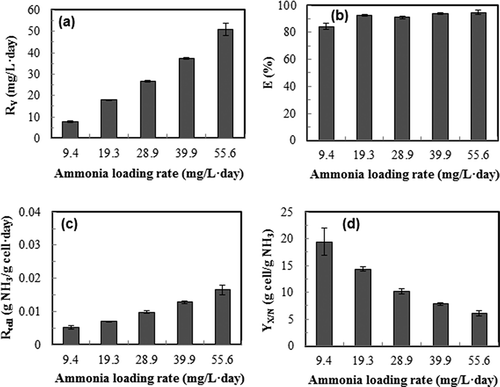
Figure 6. Cell density and biomass productivity of continuous culture of S. dimorphus under different medium pH. Dilution rate: 0.1 day−1; ammonia gas loading rate: 39.9 mg/L-day. Data are means of five consecutive samples at the steady state (after at least three volume changes), and error bars show standard deviations.
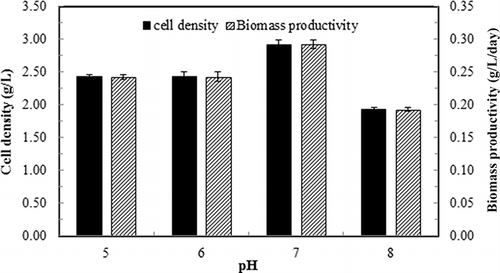
Figure 7. Effects of medium pH of continuous culture of S. dimorphus on ammonia gas removal performance. Dilution rate: 0.1 day−1; ammonia gas loading rate: 39.9 mg/L-day. (a): ammonia removal rate, R v; (b): overall ammonia gas removal efficiency, E; (c): cellular ammonia consumption rate, R cell; (d): cell yield based on ammonia, Y X/N. Data are means of five consecutive samples at the steady state (after at least three volume changes), and error bars show standard deviations.
